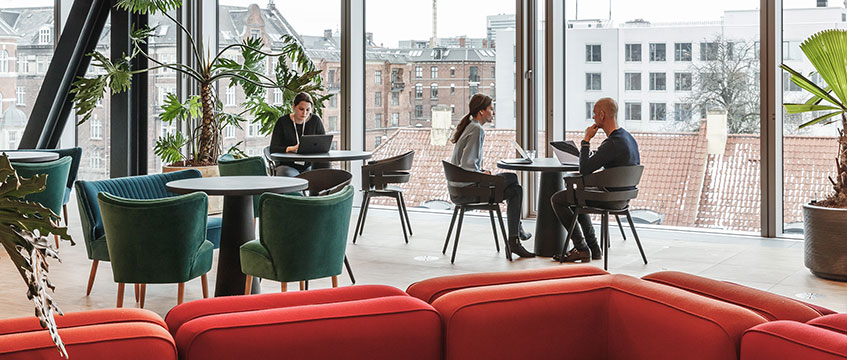Copenhagen’s tenant-first approach delivers social workplaces
BCO 2019: Copenhagen’s landlord and tenant collaboration is delivering workplaces with strong social connections, panellists at this year’s British Council of Offices conference explained.
“We don’t socialise after work, we socialise at work,” said Malin Meyer, partner at Danielsen Architecture & Space Planning. “There’s no before and after work – it is happening in the offices, and that’s how we create office spaces.”
This is enabled through a combination of planning requirements, including that ground floor spaces should not be closed, but instead open to the public and incorporate social functions. Moreover, collaboration between landlords and tenants to tailor buildings means that they are more customer-centric.
BCO 2019: Copenhagen’s landlord and tenant collaboration is delivering workplaces with strong social connections, panellists at this year’s British Council of Offices conference explained.
“We don’t socialise after work, we socialise at work,” said Malin Meyer, partner at Danielsen Architecture & Space Planning. “There’s no before and after work – it is happening in the offices, and that’s how we create office spaces.”
This is enabled through a combination of planning requirements, including that ground floor spaces should not be closed, but instead open to the public and incorporate social functions. Moreover, collaboration between landlords and tenants to tailor buildings means that they are more customer-centric.
“In Denmark, we see the developers and landlords engaging stakeholders to understand or work with the possible tenant,” Meyer added. “Service providers or landlords or operators work with a broader package of services which is quite lively. You are moving away from the desk.”
Adam Brown, vice president at BlackRock, has experienced this as both tenant and landlord. He said: “There’s no pub culture. I learned very quickly that you go to the coffee machine and maybe someone’s baked a cake, and you do that during the day as opposed to after work.”
This culture is enabled through amenity-rich offices which prioritise shared spaces for socialising and workplace collaboration, designed in partnership with tenants.
Brown said: “We have buildings being built in partnership with tenants, and it is just more collaborative.” He added that pressure from co-working providers, such as Blox [pictured above], drives the market to be more creative.
[caption id="attachment_984063" align="aligncenter" width="847"] Ramboll’s headquarters in Ørestad, Copenhagen[/caption]
Tenants in the driving seat
Lars Ostenfeld Riemann, executive director at Ramboll, said: “In the development of own building we were in full control of designing a space to meet our requirements. We started by defining those basic requirements for the building to deliver maximum performance in all the work carried out. That included things like knowledge-sharing, collaboration and transparency.”
Priorities included a lunch room, gym and showers, but also living and sleeping facilities, to be able to attract employees in Copenhagen who expect this level of amenity.
“This is a tenant’s market – we have all the power to ask the landlords for our requirements to be fulfilled,” Riemann added.
Prime office values are significantly lower in Copenhagen, at £22 per sq ft compared with £110 per sq ft in London. Riemann admits that he would like the same layout in London, but high rents restrict this, giving them half the space.
Victoria Fairhall, senior vice president and head of development at Brookfield Properties, said speculative development was a challenge when it comes to managing this space without being wasteful.
She said: “When you can get the tenants on board earlier in prelets then it’s much easier, as you can start to accommodate them.”
She pointed to fit-outs at Brookfield’s 100 Bishopsgate for tenants Jefferies, which wanted a health club, and Royal Bank of Canada, which prioritised access to the trading floor, requiring additional escalators.
“In London we are seeing a building as much more of a service for our customers.” But, she added: “We’re working with a much bigger population and a much more constrained environment.”
Within these restrictions, Fairhall still acknowledged that a great deal can be taken from the Danish approach, in terms of tenant well-being, with Copenhagen a few years in advance of London.
She said: “I hope this focus on health, happiness and wellness will keep going. That’s got to drive the fundamentals of the property industry in London.”
Click here to read incoming BCO president Paul Patenall’s piece for EG on how we can all learn from Denmark’s focus on spaces that promote joy in work.
To send feedback, e-mail emma.rosser@egi.co.uk or tweet @EmmaARosser or @estatesgazette











